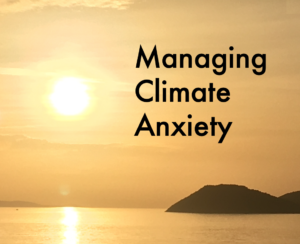In my previous blog, I shared my journey into meditation and how it helped me find inner peace. Today, I want to dive deeper and offer practical steps you can take to cultivate inner peace in your own life. Whether you’re just starting or looking to deepen your practice, these tips will guide you toward a calmer, more centered state of mind.
What is Inner Peace?
Inner peace is a state of mental and emotional calmness, where you are free from the turmoil of stress, anxiety, and negative thoughts. It doesn’t mean that life is always easy or that you never face challenges, but it does mean that you have the tools to handle those challenges with grace and balance.
1. Start with Mindfulness
Mindfulness is the practice of being fully present in the moment, without judgment. It’s about noticing what’s happening around you and within you without getting caught up in it.
- Practice Mindful Breathing: Take a few minutes each day to focus on your breath. Notice the rise and fall of your chest, the sensation of air entering and leaving your nostrils. If your mind starts to wander, gently bring it back to your breath.
- Engage in Mindful Activities: Whether you’re eating, walking, or washing the dishes, try to do it mindfully. Pay attention to the sights, sounds, and sensations you experience. This simple practice can help ground you in the present moment and reduce stress.
2. Let Go of What You Can’t Control
One of the biggest obstacles to inner peace is holding onto things that are beyond our control. Learning to let go is essential for a peaceful mind.
- Identify What You Can Control: Focus on what you can change, like your reactions, attitudes, and actions. Let go of what you cannot control, such as other people’s opinions, the past, or unforeseen events.
- Practice Acceptance: Accepting things as they are doesn’t mean giving up, but rather acknowledging reality and choosing to respond calmly. This acceptance is a powerful step toward inner peace.
3. Simplify Your Life
A cluttered mind often reflects a cluttered life. Simplifying your surroundings and commitments can have a profound impact on your mental clarity.
- Declutter Your Space: Clear out physical clutter in your home or workspace. A tidy environment can create a sense of calm and order, helping you feel more at peace.
- Prioritize What Matters: Learn to say no to things that don’t align with your values or priorities. Focus your energy on activities and relationships that bring you joy and fulfillment.
4. Cultivate Gratitude
Gratitude is a powerful tool for shifting your focus from what’s lacking to what you have. It helps you appreciate the present moment and fosters a sense of contentment.
- Start a Gratitude Journal: Write down three things you’re grateful for each day. They can be as simple as a warm cup of coffee, a kind word from a friend, or a beautiful sunset. Over time, this practice can rewire your brain to focus on the positive.
- Express Gratitude to Others: Take the time to thank people in your life who have made a difference. Expressing gratitude strengthens relationships and fosters a sense of connection, both of which contribute to inner peace.
5. Practice Self-Compassion
Inner peace begins with how you treat yourself. Being kind and compassionate toward yourself is essential for a peaceful mind.
- Forgive Yourself: Let go of past mistakes and forgive yourself for any shortcomings. Remember that everyone makes mistakes; it’s part of being human.
- Be Your Own Supporter: Speak to yourself with the same kindness and understanding you would offer a close friend. Self-compassion builds resilience and helps you navigate life’s challenges with a calmer mind.
6. Connect with Nature
Spending time in nature has a soothing effect on the mind and body. It helps you reconnect with the world around you and find a sense of peace.
- Take Regular Walks in Nature: Whether it’s a park, a beach, or a forest, spending time in nature can help you clear your mind and reduce stress.
- Practice Outdoor Meditation: Find a quiet spot in nature and meditate. Focus on the sounds, smells, and sights around you. This practice can deepen your sense of connection and inner peace.
Conclusion
Achieving inner peace is an ongoing journey, not a destination. By incorporating mindfulness, letting go of what you can’t control, simplifying your life, cultivating gratitude, practicing self-compassion, and connecting with nature, you can create a more peaceful and balanced life.
Remember, inner peace doesn’t happen overnight. Be patient with yourself and take small steps every day. Over time, these practices will become a natural part of your life, bringing you closer to the inner peace you seek.
Thank you for joining me on this journey. If you have any thoughts or experiences to share, feel free to leave a comment below. Let’s continue to support each other in finding peace and calm in our lives.


